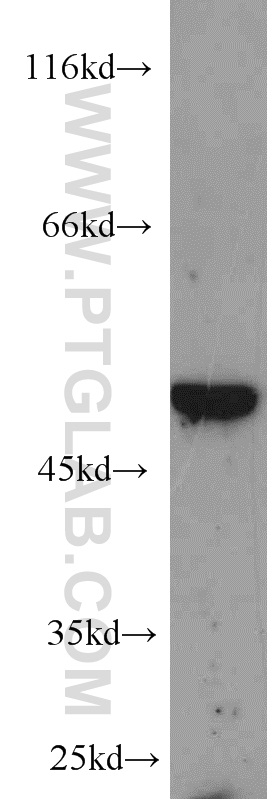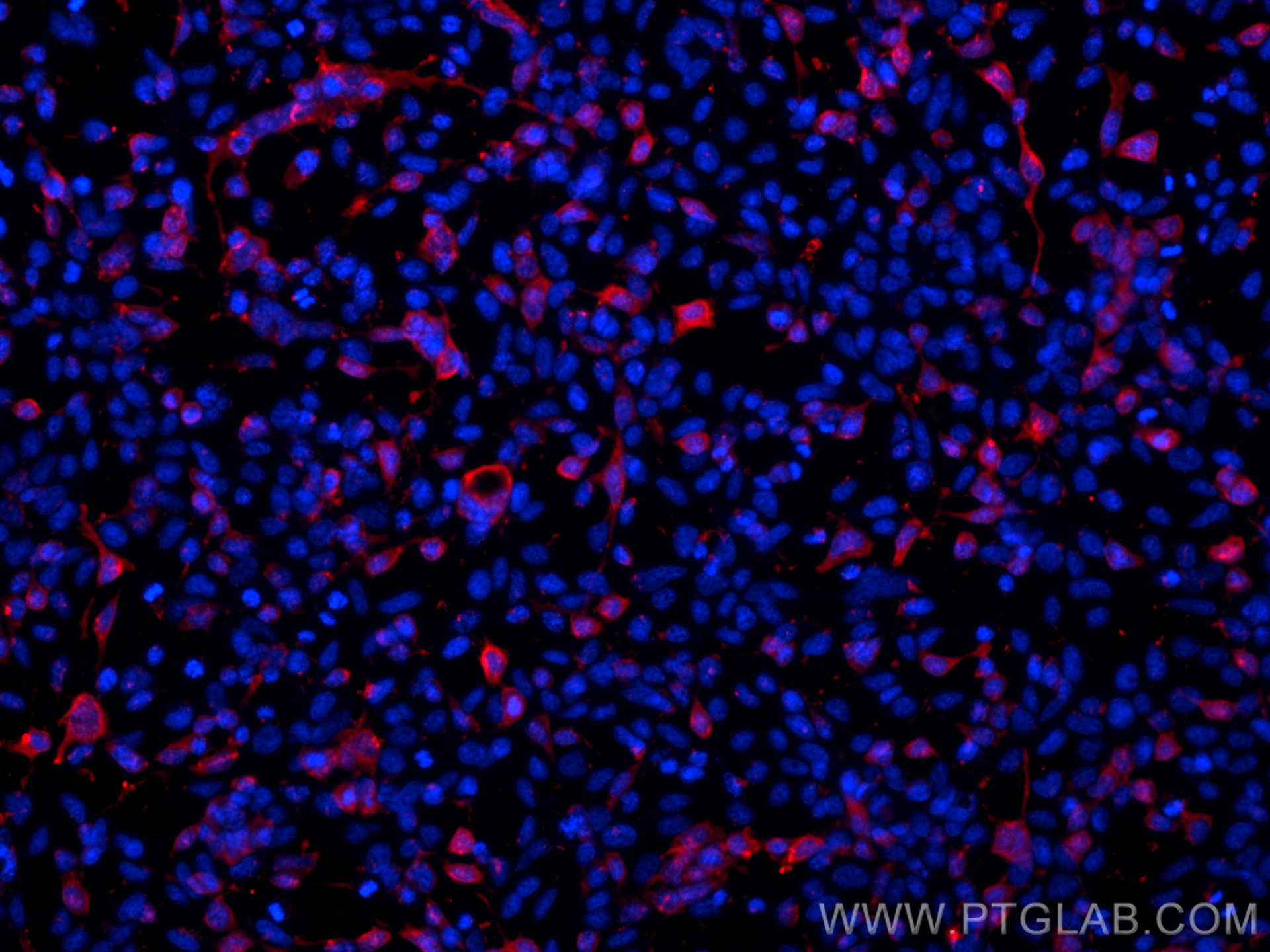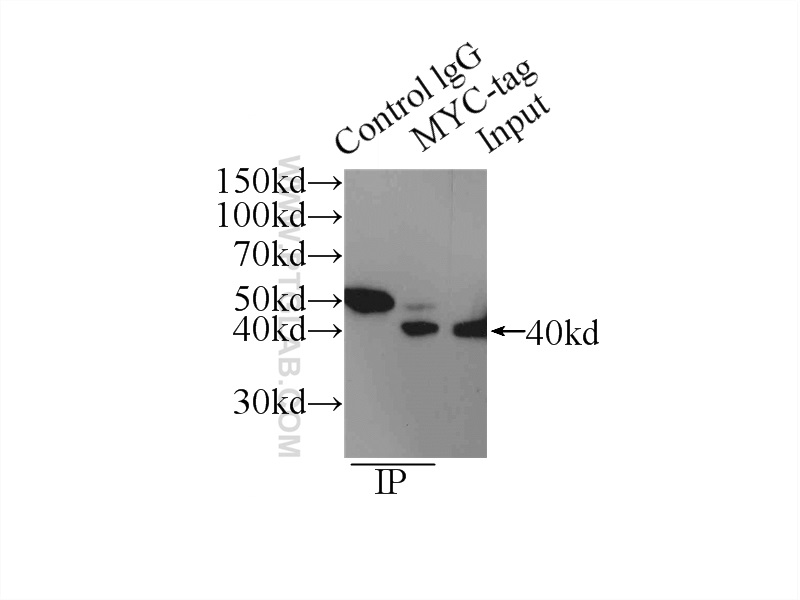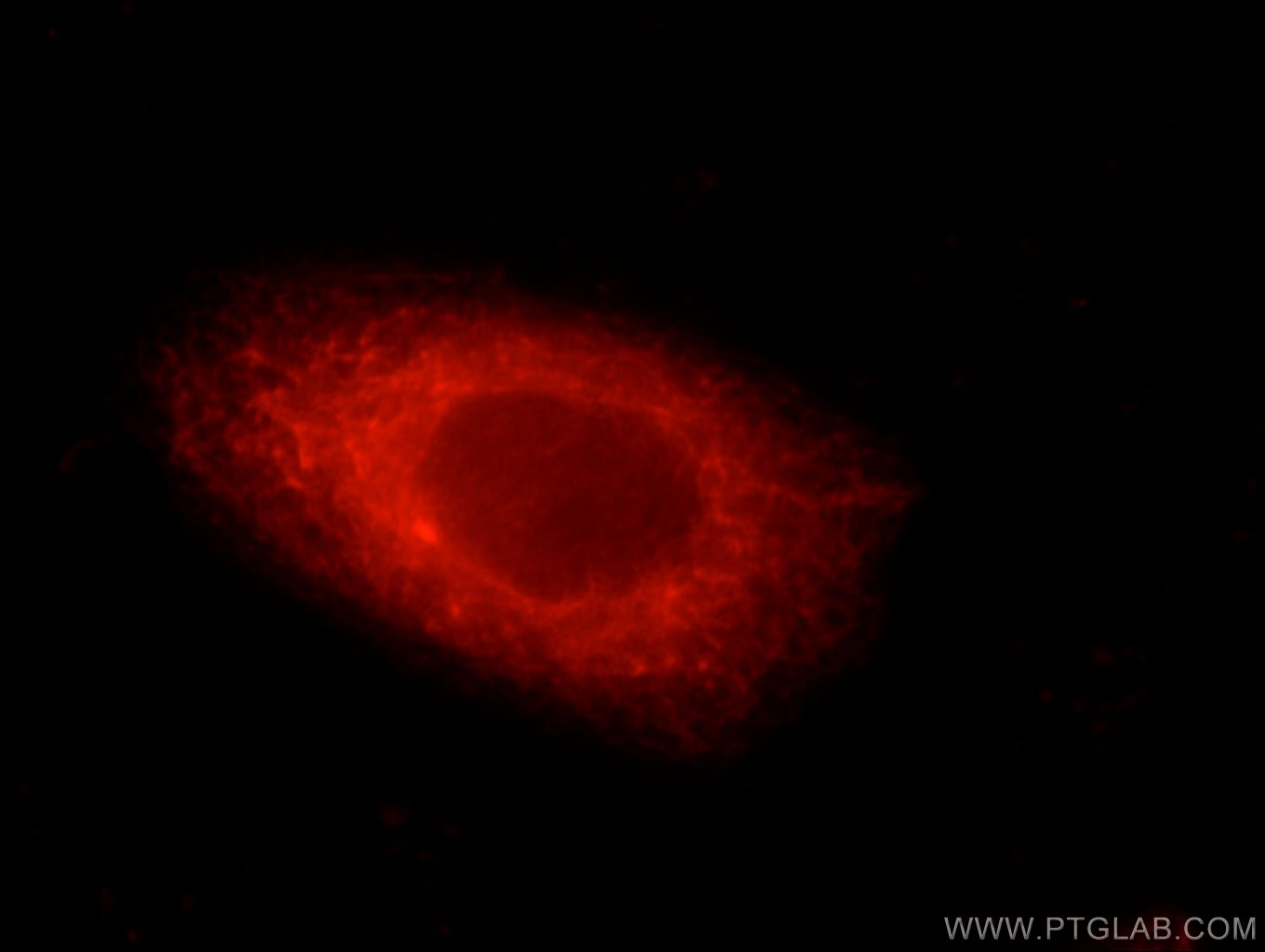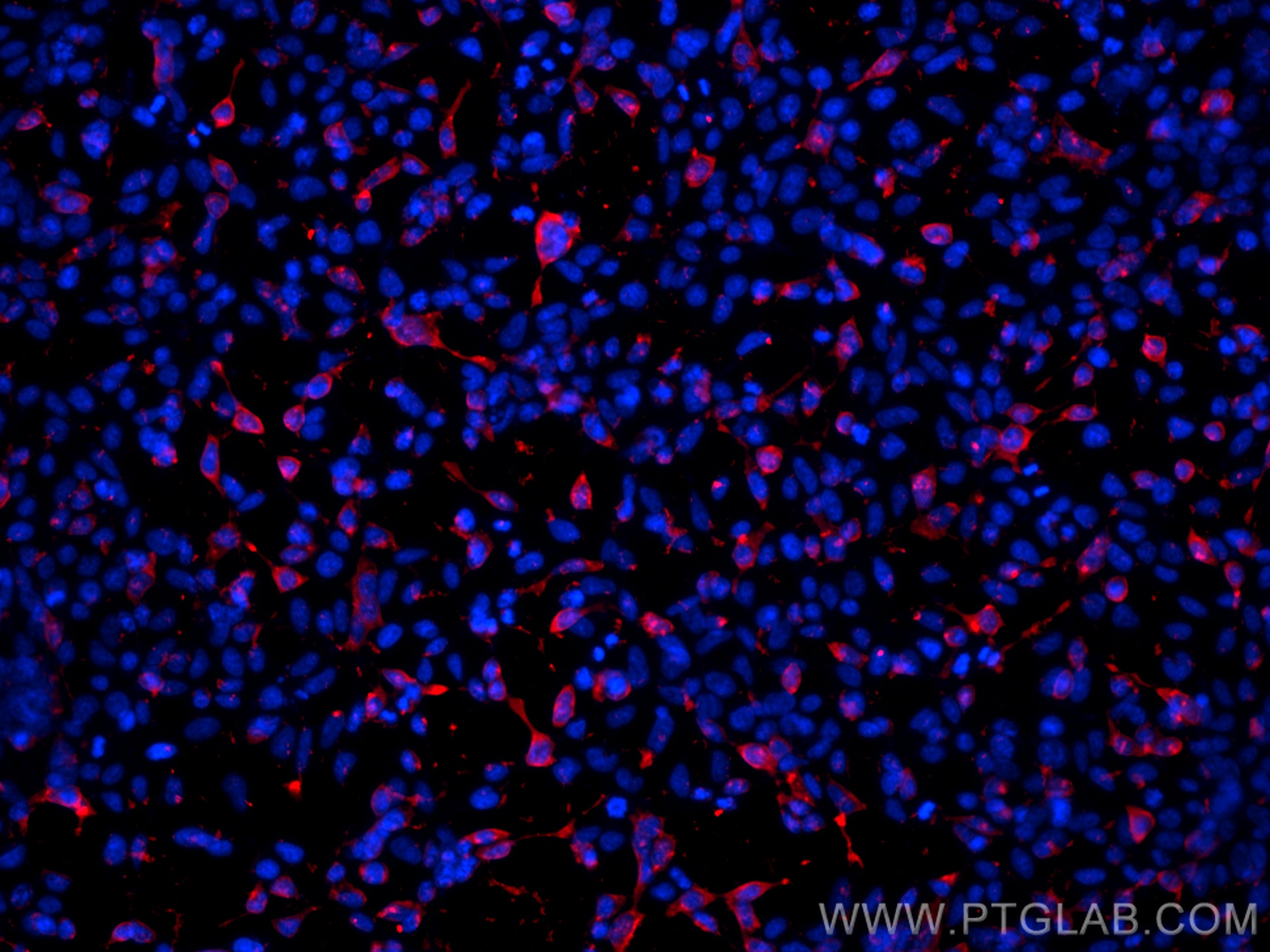MYC tag Polyclonal antibody
MYC tag Polyclonal Antibody for IF/ICC, IP, WB, ELISA
Host / Isotype
Rabbit / IgG
Reactivity
recombinant protein and More (3)
Applications
IF/ICC, IP, WB, ELISA and More (3)
Conjugate
Unconjugated
298
验证数据展示
经过测试的应用
| Positive WB detected in | Recombinant protein protein, Recombinant protein |
| Positive IP detected in | Transfected HEK-293 cells |
| Positive IF detected in | Transfected HEK-293 cells, MCF-7 cells |
推荐稀释比
| Application | Dilution |
|---|---|
| Western Blot (WB) | WB : 1:1000-1:8000 |
| Immunoprecipitation (IP) | IP : 0.5-4.0 ug for 1.0-3.0 mg of total protein lysate |
| Immunofluorescence (IF) | IF : 1:200-1:800 |
| It is recommended that this reagent should be titrated in each testing system to obtain optimal results. | |
| Sample-dependent, Check data in validation data gallery. | |
产品信息
16286-1-AP targets MYC tag in WB, IP, IF, FC, IHC, CoIP, ELISA applications and shows reactivity with recombinant protein samples.
| Tested Applications | IF/ICC, IP, WB, ELISA |
| Cited Applications | WB, IP, IF, FC, IHC, CoIP |
| Tested Reactivity | recombinant protein |
| Cited Reactivity | human, mouse, chicken |
| Immunogen | MYC tag fusion protein Ag9409 种属同源性预测 |
| Host / Isotype | Rabbit / IgG |
| Class | Polyclonal |
| Type | Antibody |
| Full Name | MYC tag |
| Synonyms | EQKLISEEDL, myc, MYC tag, myc-tag |
| Gene Symbol | |
| Gene ID (NCBI) | |
| RRID | AB_11182162 |
| Conjugate | Unconjugated |
| Form | Liquid |
| Purification Method | Antigen affinity purification |
| Storage Buffer | PBS with 0.02% sodium azide and 50% glycerol pH 7.3. |
| Storage Conditions | Store at -20°C. Stable for one year after shipment. Aliquoting is unnecessary for -20oC storage. |
背景介绍
The myc-tag is a short synthetic polypeptide sequence derived from c-myc protein that can be added to recombinant proteins to enable isolation and study when an antibody is not available. This antibody recognizes the MYC tag EQKLISEEDL.
What is the molecular weight of myc?
1203Da: the ten amino acid myc tag sequence is EQKLISEEDL (in single letter code).
What are the applications for myc tag?
The addition of the myc tag to a particular protein can be useful when an antibody is not available to the protein of interest. Using recombinant DNA technology, the myc tag can be fused to the protein and then an antibody against the myc tag can be used to probe (PMID: 24490106). This is a reliable method and can be used in a number of different techniques, including purification using chromatography, tracking the protein in localization studies using immunofluorescence, or quantifying levels using Western Blot (PMID: 24490106).
What is the structure of myc tag?
The c-myc gene from which this tag is derived has a molecular weight of 49kDa, but the myc tag represents only a small portion of the C-terminus of this gene. The short polypeptide sequence can be fused to the N-terminus or the C-terminus of any protein without influencing function, although it is advised to avoid fusing it to a secretory signal. A cleavage site behind this tag is also sometimes engineered to allow removal with a specific protease.
实验方案
| Product Specific Protocols | |
|---|---|
| WB protocol for MYC tag antibody 16286-1-AP | Download protocol |
| IF protocol for MYC tag antibody 16286-1-AP | Download protocol |
| IP protocol for MYC tag antibody 16286-1-AP | Download protocol |
| Standard Protocols | |
|---|---|
| Click here to view our Standard Protocols |
发表文章
| Species | Application | Title |
|---|---|---|
Signal Transduct Target Ther TRAF3 activates STING-mediated suppression of EV-A71 and target of viral evasion | ||
Nat Microbiol Ephrin receptor A2 is an epithelial cell receptor for Epstein-Barr virus entry. | ||
Nat Commun TRIM5α recruits HDAC1 to p50 and Sp1 and promotes H3K9 deacetylation at the HIV-1 LTR | ||
Nat Commun The CUL5 E3 ligase complex negatively regulates central signaling pathways in CD8+ T cells | ||
Mol Cell CPT1A induction following epigenetic perturbation promotes MAVS palmitoylation and activation to potentiate antitumor immunity | ||
Mol Cell Lactylation-driven METTL3-mediated RNA m6A modification promotes immunosuppression of tumor-infiltrating myeloid cells. |
